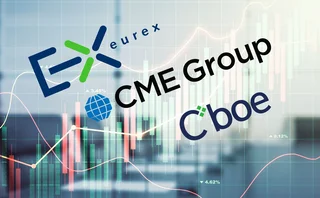
Index vol has been a poor hedge for equity rout, traders say
Single stock ‘micro’ hedges have offered more protection in this year’s selloff

Traditional long volatility hedges have offered little protection during the recent selloff in US equities, traders say, as the growth-to-value rotation left index volatility unusually subdued in the face of a sharp drop in stock prices.
Hedging equity risk by buying calls on the Vix index of S&P 500 options volatility has proved “quite difficult,” said Marc Möhrle, a portfolio manager at DWS, “because index vol just didn’t pick up at all or is quite depressed even though we’ve had quite
Only users who have a paid subscription or are part of a corporate subscription are able to print or copy content.
To access these options, along with all other subscription benefits, please contact info@risk.net or view our subscription options here: http://subscriptions.risk.net/subscribe
You are currently unable to print this content. Please contact info@risk.net to find out more.
You are currently unable to copy this content. Please contact info@risk.net to find out more.
Copyright Infopro Digital Limited. All rights reserved.
As outlined in our terms and conditions, https://www.infopro-digital.com/terms-and-conditions/subscriptions/ (point 2.4), printing is limited to a single copy.
If you would like to purchase additional rights please email info@risk.net
Copyright Infopro Digital Limited. All rights reserved.
You may share this content using our article tools. As outlined in our terms and conditions, https://www.infopro-digital.com/terms-and-conditions/subscriptions/ (clause 2.4), an Authorised User may only make one copy of the materials for their own personal use. You must also comply with the restrictions in clause 2.5.
If you would like to purchase additional rights please email info@risk.net
More on Markets
Review of 2024: as markets took a breather, firms switched focus
In the absence of major crises and rules deadlines, financial firms revamped strategy, services and practices
Cboe plans Q2 dispersion futures listing
Expectations of post-US-election uncertainty drives launch, and could help bank equity desks hedge OTC risks
Futures exchanges look to ride credit ETF wave
Proponents hope for increased buy-side trading, with three exchanges competing for market share
Doubts raised over new FX platform disclosures
New disclosure sheet template will require platforms to outline how they charge for data
Pimco and Vanguard slash FX forwards trading with BNP Paribas
Counterparty Radar: French bank sees its notional with mutual funds halve
Profit and pain as macro turmoil engulfs Brazil
FX options trades pay off, while sharp jump in rates caught traders by surprise
Repo and FX markets buck year-end crunch fears
Price spike concerns ease as September’s surprise SOFR jump led to early preparations for bank window dressing
US senators press CFTC on Japan swap clearing
Boozman and Hagerty urge action on yen swap clearing access to JSCC in letter to US regulator








